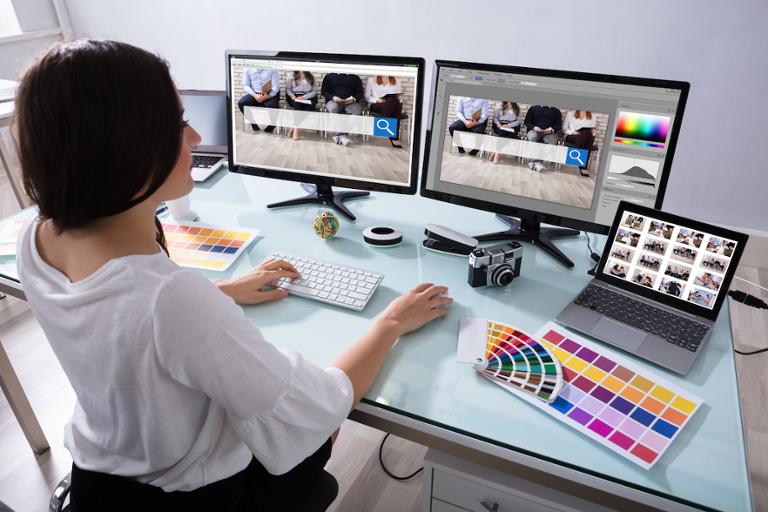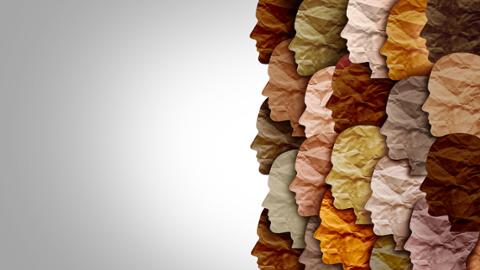Businesses need to constantly optimize digital products and enhance their customers' user experiences (UX) to remain competitive. As product developers, designers, and leaders look for creative and intuitive UX software solutions, the diversity of their team members is paramount.
Often, design and innovation are products of diversity: Apple's diverse team and ongoing conversations with the blind community led them to create a LiDAR (light detection and ranging) solution for social distancing and more. Similar to how dolphins recognize sound pulses to “see” their periphery, LiDAR uses a pulsed laser to “ping” nearby objects and generate a 3D model of the surrounding world.
Diverse teams are not simply a statistic in the HR department but a valuable asset to the success of your business. It is well-proven that companies show much better performance and innovation if their workforce diversity increases. Leadership teams of above-average diversity have reported 19 percent higher revenues.
But diversity alone does not lead to success. You need an inclusive team that celebrates individuality and reflects on different views.
How can team leaders achieve this? The key is to consider diversity when hiring and build an inclusive culture. Here's how.
The benefits of diversity in product design
Recently, my design team and I developed an app that different people from Latin America will use. Even though the customer base is from multiple Spanish-speaking countries, linguistic details vary across regions. While testing the product prototype with different users, we realized we needed to create specific wording for each country to make the UX friendly and understandable for everyone. We might never have hit upon the final solution if we weren't a diverse team, testing with a diverse set of users.
Surveys, interviews, and field exploration are suitable for an initial understanding of the target user. However, a diverse group of designers will furnish multiple perspectives when curating and challenging hypotheses, acknowledging their unconscious bias, and being empowered to change them. Without asking potential users or experiencing cultural differences, it can be difficult to predict hurdles.
Local connections, native language skills, and cultural understanding can boost the development of internationally traded software products. A team that reflects the target customer will be halfway to better providing knowledge on local laws, behavior design, usability, aesthetics, context, and functionality to ensure you meet the user's needs. Your employees will also require a diverse set of specialist skills to meet these demands. Each member of my design team brings a different capacity to the table: some are more visual-oriented, others are more focused on the experience, and their collaboration leads to the best solutions.
How to achieve a diverse team
Forming a diverse team begins by recruiting with an open mind. Employees who feel confident expressing an opposing view will sharpen the team's performance. However, there is a tendency to hire professionals that connect with applicants similar to those hiring. Being aware of homogeneity and individual bias is essential when looking for new teammates.
Hiring processes that focus on the position requirements instead of demographics and status help eliminate bias. You can put candidates' talents to the test and prove their capabilities by creating hypothetical scenarios. In addition, enabling them to experience the culture and ways of working, for example, by including them in an active project, demonstrates their cultural fit.
When interviewing new people to join a diverse design team, it’s good practice to ask questions that challenge conventional ways of thinking, such as: What should you do if the client wants something and you have another point of view?
The answer will acknowledge the negotiation abilities of the candidate as well as the place they give to the users during the design process. A difference in opinion should be a welcomed and familiar situation in designing products.
How to build a diverse culture
What sparks creativity? Challenging working environments where people feel comfortable tapping into their perspectives and sharing intuition.
To build a pool of creative talent with design intuition and confidence, invest and nurture teams by implementing multiple layers of review channels. From daily meetings, where everyone shows work and collaboratively gathers feedback, to self-evaluation processes, there are numerous ways you can encourage individuals to listen to their peers, share concepts and reflect on themselves. Reflection exercises that ask the team to review what was supposed to happen, what did happen, and what can be improved will encourage continuous individual growth and generate collective knowledge valuable to the company.
Some people prefer talking, others writing, others one-to-one meetings. Leaders should be aware of their team members' different ways of participating, working, and learning to generate the best conditions. Adjunct Professor, Bourke, found that leaders have a 70 percent impact on an individual’s workplace experience, which rises in correlation with employees' uniqueness. The team leader should be attentive and facilitate the best space for their team to give their opinions.
Group activities are of great help. Different rituals such as exercises, where employees take turns each week to pick a discussion topic, play a team-building game, or decide on an experience to share, will challenge colleagues to bond. If your team is working remotely, online tools can substitute for in-person interaction.
Employees who consider their strengths and areas for growth will gain increased motivation and provide you with a structure for a personal career path. You can agree on the growth points and the reasons behind these ideas together. Companies can invest in specialist training opportunities with respect to each employee's interests. The more personalized the options for learning are, the more significant the learning effect will be.
Looking forward, companies can also benefit from supporting local communities dedicated to diversity. Organizations such as +Mujeres UX provide women with a safe space for training, networking, mentoring, among other opportunities to grow in the UX industry. By supporting training for minority groups, a more intelligent and diverse workforce will be born.
The results of diversity are simple: more ideas for more environments increase your company's productivity. By creating a culture of inclusion, coworkers can learn from one another, collaborate, and have a more extensive range of vision, inspiration, intuition, and sensibility. The secret to working best as a team is to honor individual uniqueness.
Inés Carriquiry is Design Lead of Octobot.



